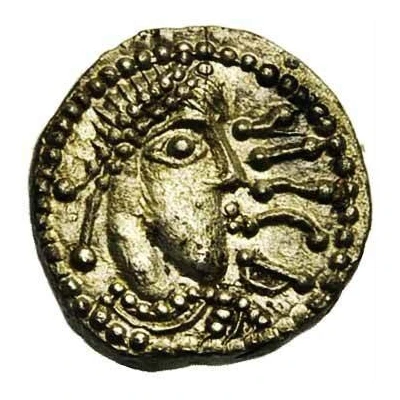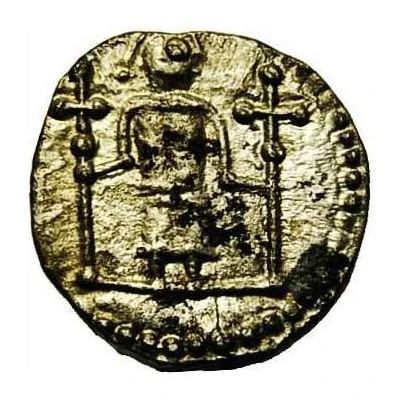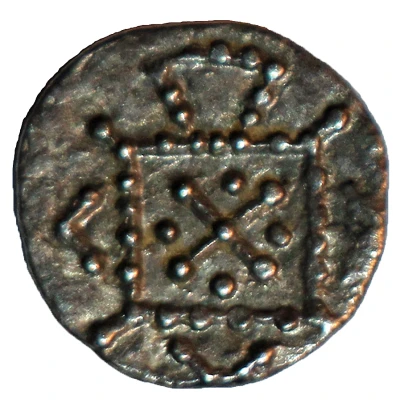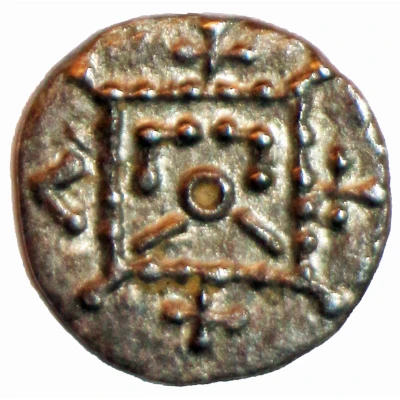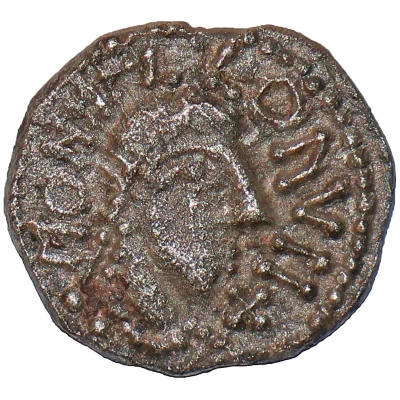
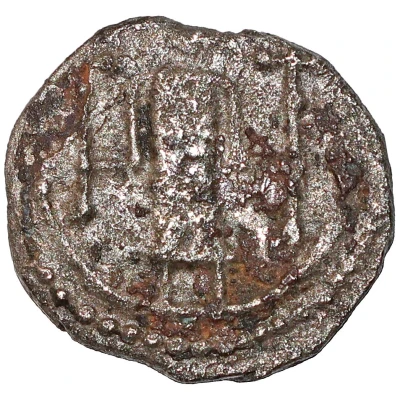

Sceat Monita Scorum; figure with two crosses
| Silver | 0.91 g | 12 mm |
| Issuer | Early Anglo-Saxon (Kingdoms of British Isles and Frisia) |
|---|---|
| Type | Standard circulation coin |
| Years | 710-760 |
| Value | 1 Sceat |
| Composition | Silver |
| Weight | 0.91 g |
| Diameter | 12 mm |
| Shape | Round (irregular) |
| Technique | Hammered |
| Orientation | Variable alignment ↺ |
| Demonetized | Yes |
| Updated | 2024-10-09 |
| Numista | N#431395 |
|---|---|
| Rarity index | 97% |
Reverse
Standing figure in crescent boat, head right, wearing long robe, holding two long crosses.
Comment
Early Anglo-Saxon (600-775), Eclectic Sceattas (c.710-c.760), Series T related from the Upper Thames area. Abr. (Sceatta List) 24-40, M. p.435-6.
This obverse is also found with other reverses: a degenerate ‘porcupine’ head left; or triquetra cross (S 824), and with the legend DE LVNDONIA on the obverse and SCORVM on the reverse (S824A, Abr. SL 24-50, 25-50). Related to Abr. SL 110-90.
Eclectic sceattas are groups of types, related often by a common reverse motif (Triquetras, Celtic cross, interlace, saltire, annulet cross groups and Type 70) that do not easily fit into the main alphabetical classification of the secondary phase, even though there may be some features in common with or derived from the types therein.
Interesting fact
One interesting fact about the Standard circulation coin Sceat (Monita Scorum; figure with two crosses) (710-760) from Early Anglo-Saxon (Kingdoms of British Isles and Frisia) made of Silver weighing 0.91 g is that it was used as a form of currency during a time of significant cultural and economic change in England. The coin features a unique design with two crosses, which may have had religious or symbolic significance during that period. Additionally, the fact that it was made of silver suggests that it was a valuable and durable form of currency, which may have been used for trade and commerce.
